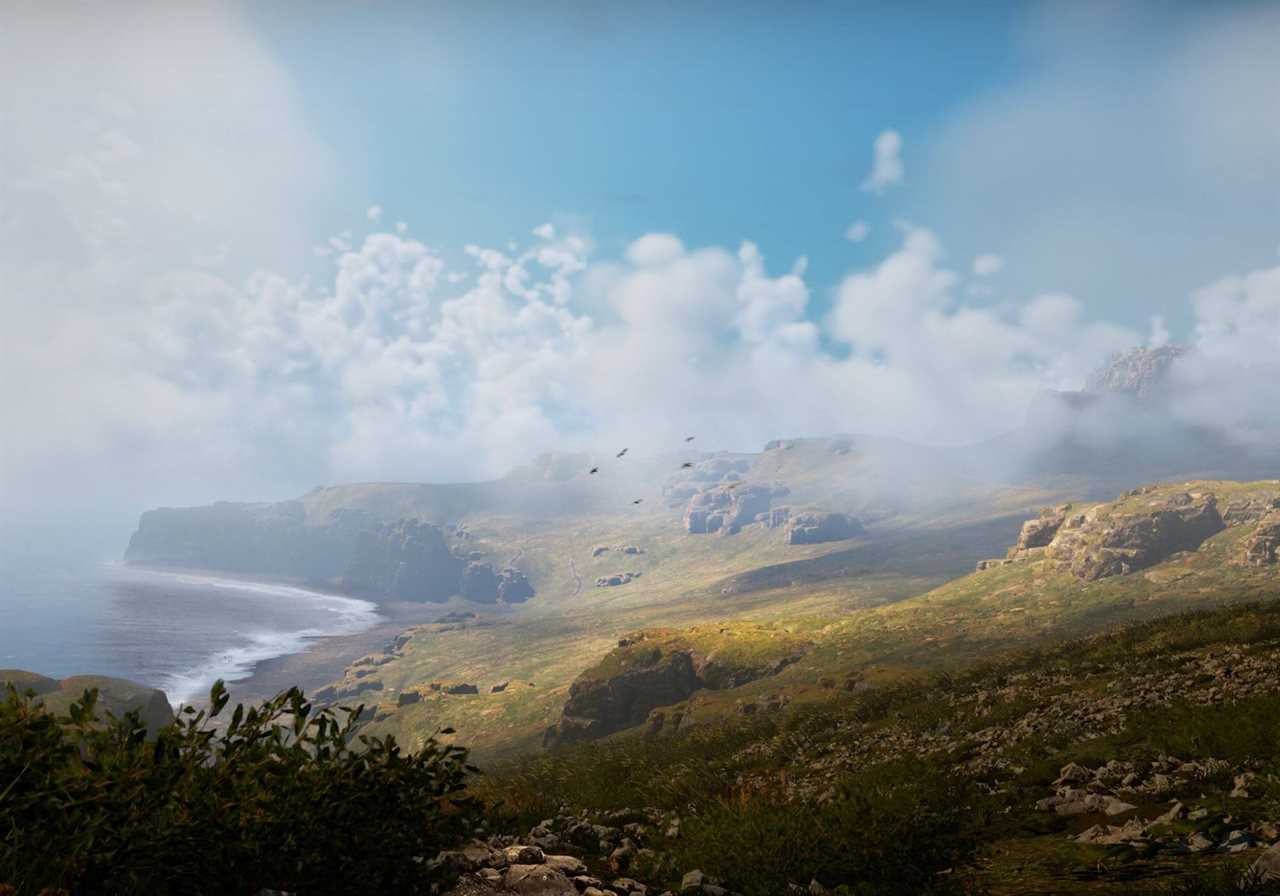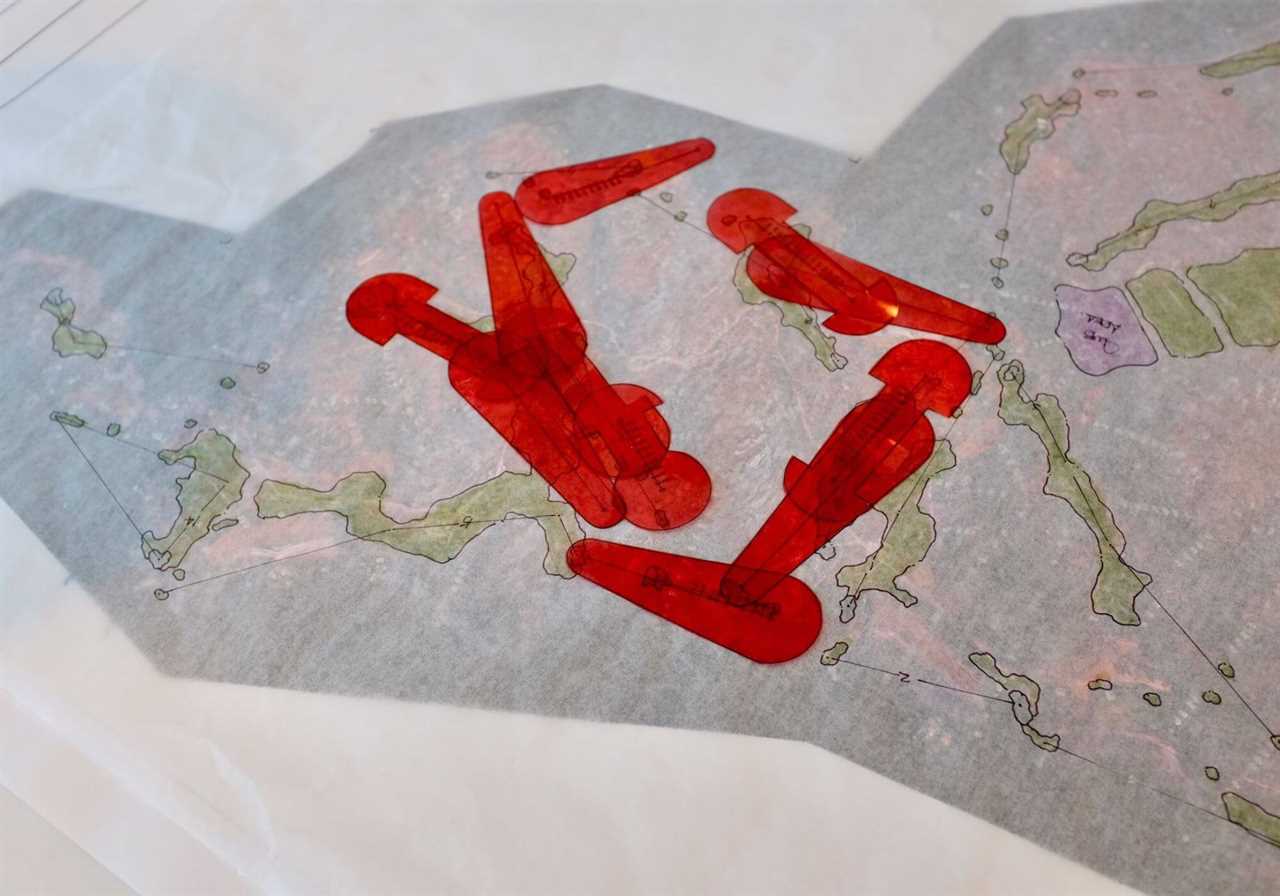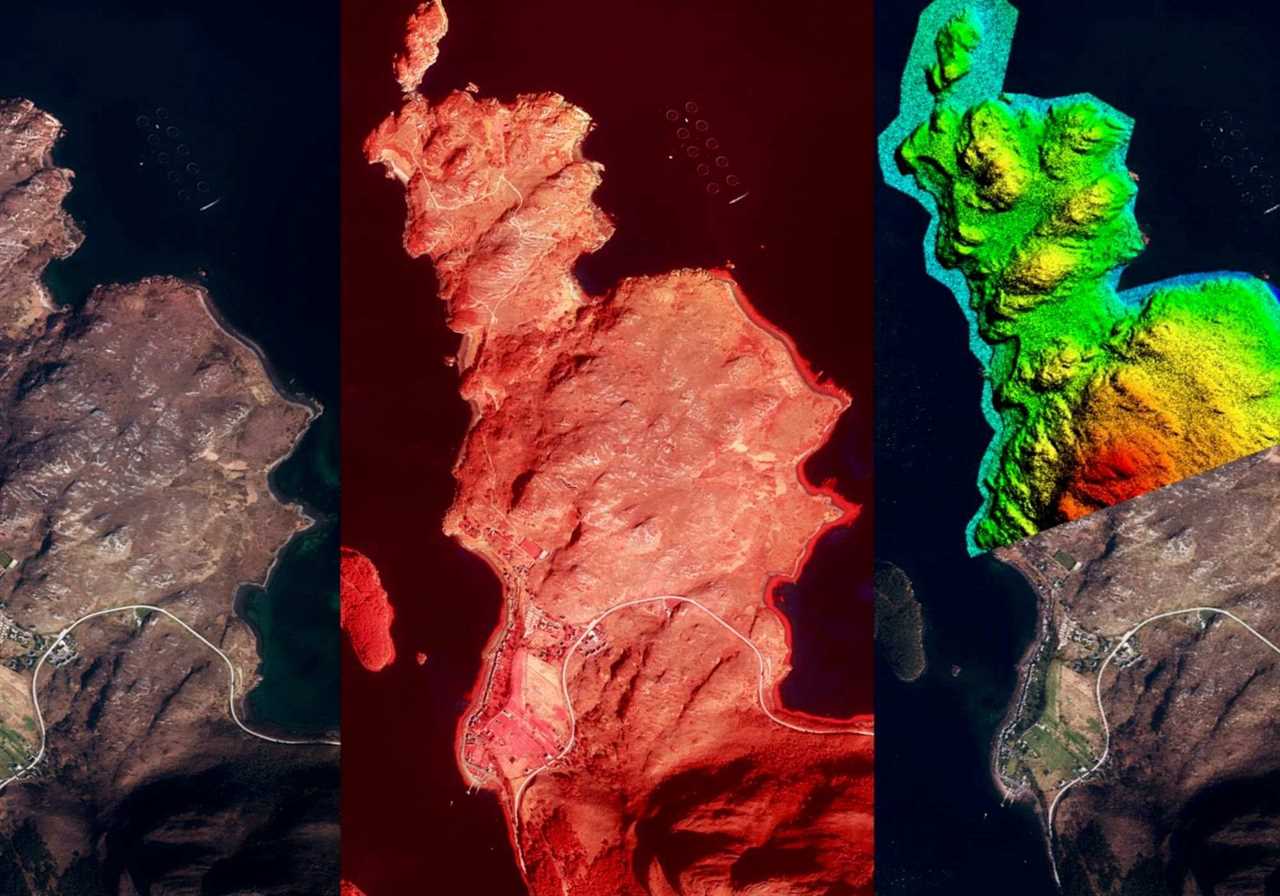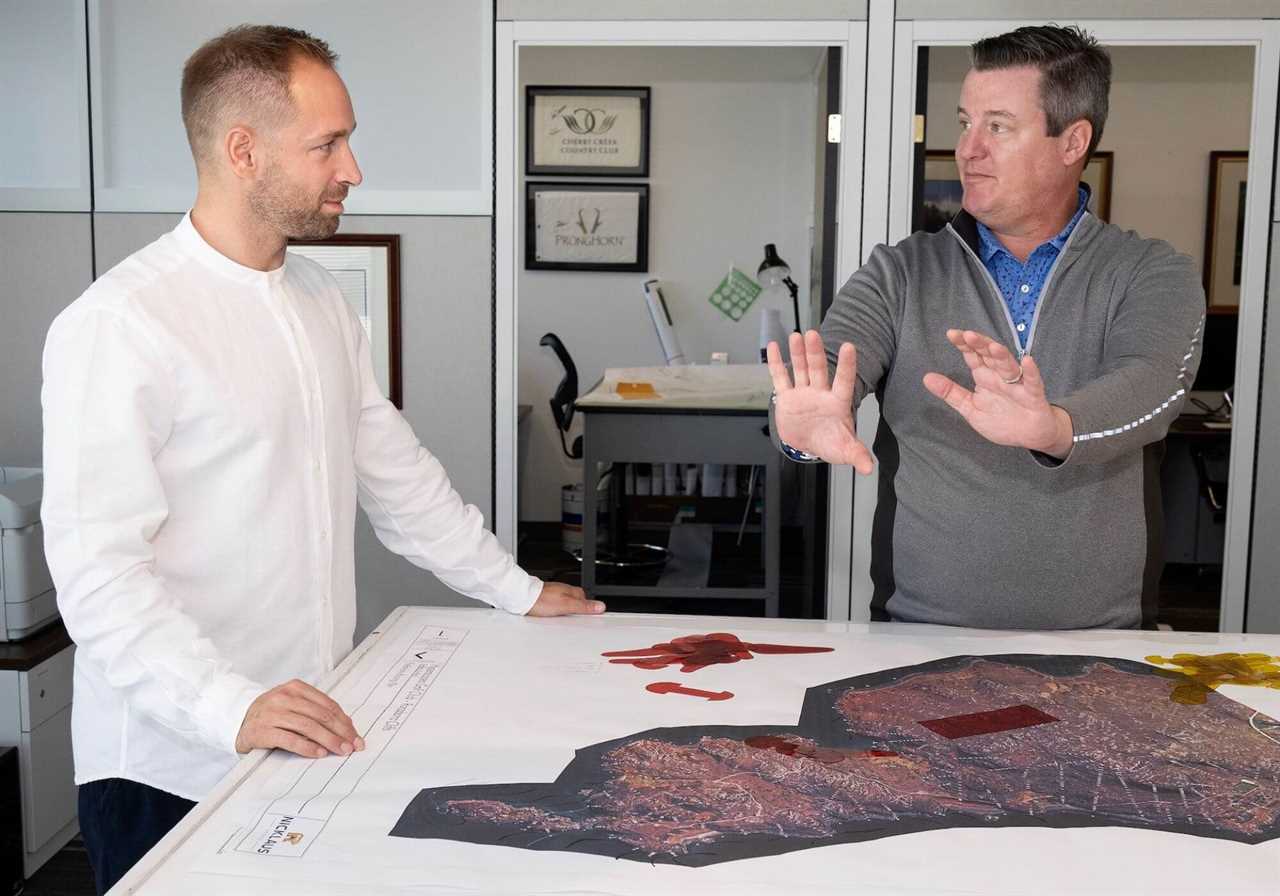You’re on an emerald green fairway by the edge of a craggy cliff in Scotland’s Northwest Highlands. Glancing at the majestic Caledonian pines in the distance, you ponder pressing on the next hole in your $5 nassau against your playing partner Alastair.
As you’re about to begin your backswing, the warble of a starling harshes your mellow. Suddenly, the Braveheart countryside dematerializes and you’re back in Poughkeepsie alone in your man cave golf simulator. The bird call was your ringtone. It’s your wife reminding you to pick up the dry cleaning.
The fizz of the metaverse, that next iteration of the internet where mere websites give way to immersive and highly interactive digital environments (per our hypothetical example), has temporarily gone flat. But virtual playgrounds are still being developed as the technology plays catch-up to the early hype.

Hyperscapes Golf Club CEO Gabor Tankovics has teamed with Nicklaus Design to build Rocabarra Cliffs, what they call the first members-only virtual golf club crafted by real-world golf course architects.
Rather than conjure an otherworldly fantasy setting—routing a course through the trendiest arrondissements of Paris or plopping a links on the moon—they’ve meticulously rendered a square-mile Scottish peninsula abutting Loch Shieldaig as it would have looked 6,000 years ago.
Former University of Stirling Richard Tipping, who specializes in environmental archaeology in the area, was brought onboard. He lent his expertise from a natural history perspective so the virtual-reality renderings would be rooted in historical accuracy.
“Richard gave us 50 pages of research and found that there used to be soil there,” says Tankovics. “The only reason we don’t have soil now on the rocky peninsula is human intervention. What we are doing is recreating a 6,000-year-old landscape and then having the golf course designer work with the landscape as if it were real.”

According to Chad Goetz, Senior Design Associate at Nicklaus Design, “we have approached the design process for Rocabarra Cliffs in the exact manner that we develop all new designs around the world. Even though this golf course will be in the metaverse, we will design and ‘build’ the course with the same detailed hands-on approach that we utilize on every project in the real world.”
Target Market
Hyperscapes is taking payments on founding memberships to their virtual golf club which go for $50,000 each. When they’re sold out, memberships will be minted on Ethereum, with crypto being used mostly for utilitarian purposes to allow for interoperability (any device, any OS) and to make it trustless (decentralized and more secure), both hallmarks of the benefits of blockchain tech. But if that last sentence sounded like gobbledygook, no sweat, members can pay with old-fashioned money.
“It’s a very Web 2.5 approach. Your user experience doesn’t involve crypto. You still need to have a crypto wallet but that’s the only thing you need to have,” Tankovics explains.
Rocabarra Cliffs is expected to be playable in the latter half of 2024. Tankovics, whose previous gigs include teaching at Parsons School of Design in New York, describes the early takers as tech-aware well-heeled passionate amateur golfers who own a high-end home simulator or have access to one at their real-world golf club.

“Our aim is to give you everything you would get at a members-only golf club, minus the ability to live there, that is playable from anywhere in the world. But not having to buy a villa either, so that is kind of an advantage, plus you have the ability to follow the whole Nicklaus design process. The goal here is to provide a real premiere golf experience—outstanding service and outstanding customer care.
“We are building really cool concierge services, even during the golf development process, with physical people who service you 24/7. You put your headset on and you can witness the golf development process. ‘I see you haven’t been here for three days. We broke ground on hole No. 7, do you want to see the evolution? It’s an incredible experience.’”
A social dynamic, approximating the hobnobbing that goes on at real-world clubs, is something that will be integrated into the end product.
“It’s something we are working on really heavily,” says Tankovics. “It very much plugs into the club life experience that is quite important and completely absent from anything to with indoor golf.”
While details on how they’ll implement clubby vibes in a virtual setting are not currently public, Tankovics did tease that while you won’t need a VR headset to use these features, it will be much better with one.
The exclusivity aspect, integral to approximating the rarified top-tier private club universe, is an easier feat to achieve—total membership will be capped at 300. But, if Rocabarra sells out, expect Hyperscapes to begin opening more courses.

Hyperscapes’ Gabor Tankovics (on the left) with Jack Nicklaus Design’s Chad Goetz discussing early routing.
“The grand vision is to build quite a few together with Nicklaus Design,” says Tankovics. “The goal is to have a reciprocity agreement between the different clubs so Rocabarra Cliffs members will be able to play the next club in a limited fashion.”
But there won’t be dozens of Hyperscapes golf dreamlands overnight. This virtual build alone has taken 18 months and, besides, they don’t want to dilute the value of membership by making haute virtual golf commonplace.
Indoor golf has exploded in the past few years. According to the National Golf Foundation, 6.2 million Americans played on a simulator in the past year, a 73-percent increase over pre-pandemic levels and Hyperscapes hopes to fill a current void in the emerging market—a high-end niche.
“Communities congregate naturally around golf so it’s very much a natural phenomenon for indoor golf to generate its own communities. We are basically connecting the dots between indoor golf to a membership golf experience,” Tankovics said.
With the Meta Quest 3 headset selling well and the long-teased Apple Vision Pro expected to launch in the spring, there are positive drivers on the horizon that could reinvigorate interest in virtual reality products. In other words, the Metaverse is primed for a comeback.
“With these tech trends, we always expect things to happen in one year and it doesn’t. Generative AI was a big thing four years ago—we were all using it to code music. I was studying it quite a bit, there was a group doing a generative Nirvana song and then AI disappeared from the masses for two years and now it’s back.”
It was a bummer when the TGL was punted into 2025 but if the tech-addled pro golf simulator league spearheaded by Tiger and Rory is looking for a lit virtual track to host its first championship, Rocabarra Cliffs, which should be ready to play by then, might just be the spot.
The post Hyperscapes: Is Virtual Reality the Future of Golf? appeared first on MyGolfSpy.
https://mygolfspy.com/news-opinion/hyperscapes-is-virtual-reality-the-future-of-golf/
 Backyard GrillingWeekend WarriorsAdvice from DadBeard GroomingTV Shows for Guys4x4 Off-Road CarsMens FashionSports NewsAncient Archeology World NewsPrivacy PolicyTerms And Conditions
Backyard GrillingWeekend WarriorsAdvice from DadBeard GroomingTV Shows for Guys4x4 Off-Road CarsMens FashionSports NewsAncient Archeology World NewsPrivacy PolicyTerms And Conditions
